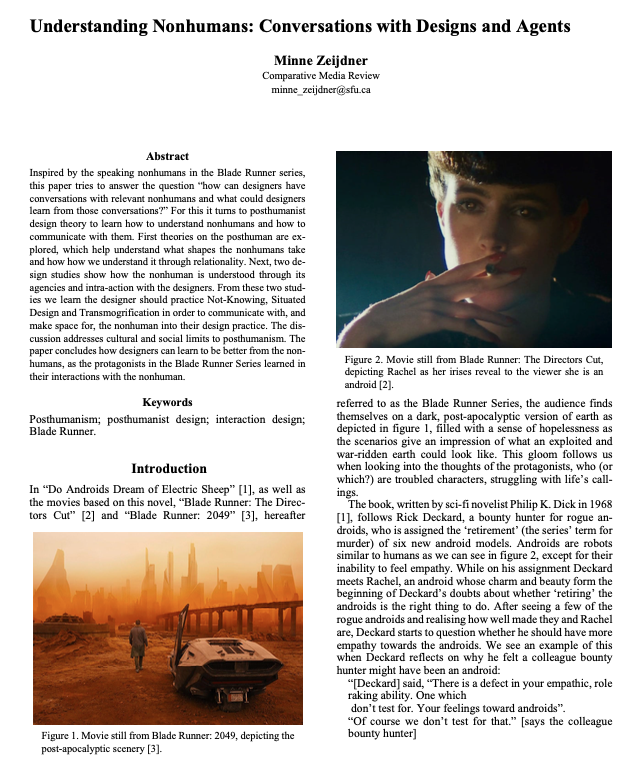U&S | D&RP
Science, Technology & Culture is a course I attended while on my exchange to Simon Fraser University. It was a reading intensive course into historical and theoretical literature on on technology design and use in contemporary society.
The course was divided up into two parts. The first part was done in class and though literature, where each week we covered one of the following themes: Constructivism, Objectivity in science, Ontology, Human and Nonhuman, Feminism and STS, Race and STS, the Anthropocene, and Colonialism and STS. Works on these themes by scholars like Donna Haraway or Karan Barad were discussed in class, which enabled me to learn from the different nationalities which came together. As the course provided me with insights like where statistics come from, how knowledge is embodied, how indigenous people approach AI or how wrong we are in designing for “them”, I got a broad overview on many different themes which are relevant to the social side of design and academics. However, also I realise there is still much I do not know, and I should approach the world with a humble and open attitude.
The second part of the course done through a paper assignment, where I did a literature review into the understanding of nonhumans by designers, by taking the Blade Runner films and book as inspiration. This allowed me to deepen my knowledge on designing with nonhumans, and posthumanist theories. But mostly, it felt like the course on doing research and writing a proper academic paper I never had. Through the exercise of writing this paper I felt I was finally understanding how to approach research and a research question, which I struggled with during Construcive Design Research and my M1.2. During those projects I did not feel comfortable with the research, and had a rough time defining what I was actually investigating. In this paper I show I am able to define a research question and do the proper research behind it to answer it. I was able to find academic sources which supported my final claim, and organise them so the reader would be able to understand where I was coming from.



